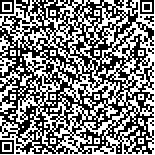汪文静,赵敬军,任萌,等.应用Catwalk步态分析系统评价经颅脉冲电刺激对MCAO模型大鼠运动功能的作用[J].中华物理医学与康复杂志,2021,43(5):385-390
扫码阅读全文

|
| 应用Catwalk步态分析系统评价经颅脉冲电刺激对MCAO模型大鼠运动功能的作用 |
|
| |
| DOI:10.3760/cma.j.issn.0254-1424.2021.05.001 |
| 中文关键词: 大鼠大脑中动脉栓塞 经颅脉冲电刺激 步态分析 |
| 英文关键词: Stroke Transcranial stimulation Pulsed current stimulation Gait analysis Catwalk |
| 基金项目:上海申康医院发展中心临床科技创新项目(SHDC12018126);加快中医药事业发展三年行动计划项目(ZY(2018-2020)-CCCX-2001-06);上海市卫生健康委智慧医疗专项(2018ZHYL0216);国家自然科学基金青年项目(81704163) |
|
| 摘要点击次数: 5445 |
| 全文下载次数: 9413 |
| 中文摘要: |
| 目的 应用Catwalk步态分析系统评价经颅脉冲电刺激(tPCS)对大鼠大脑中动脉栓塞(MCAO)模型偏瘫侧运动功能的影响。 方法 采用大脑中动脉栓塞法建立右侧大脑局部缺血再灌注脑卒中模型大鼠24只,然后用随机数字表法分为假手术组、模型组、经颅脉冲刺激组(tPCS组),每组8只。术后2 d开始tPCS干预,干预7 d,每天20 min。在造模后1 d观察模型大鼠的神经功能缺损评分。在造模前1 d、造模后1、9 d用catwalk步态系统采集步态行为数据。 结果 造模9 d后,tPCS组Bederson评分为(1.50±0.53)分,较组内造模1 d后和模型组造模9 d后均显著降低,差异均有统计学意义(P<0.01)。造模1 d后,模型组和tPCS组患侧肢体的爪印与玻璃的平均接触面积、肢体摆动速度、步幅长度、肢体速度、摆动时间、平均运行速度和站立时间与组内造模1 d前比较,差异均有统计学意义(P<0.05)。造模9 d后,tPCS组偏瘫侧的左前肢站立时间、脚掌与玻璃接触面积和左后肢站立时间均显著优于模型组,差异均有统计学意义(P<0.05)。 结论 tPCS可以促进缺血再灌注大鼠偏瘫侧前后肢步态功能的改善。 |
| 英文摘要: |
| Objective To evaluate any effect of transcranial pulsed current stimulation (tPCS) on the motor functioning of rats modelling stroke using the Catwalk gait analysis system. Methods A stroke model was induced in 24 rats using middle cerebral artery embolization. They were then randomly divided into a sham operation group, a model group and a tPCS group, each of 8. Neurological deficit scores were assigned 1 day after the modeling. Beginning two days after the modeling the tPCS group was given 20 minutes of tPCS daily with an intensity of 0.2mA at 10Hz for 7 days. Gait data were collected using the Catwalk gait system 1 day before, as well as 1 and 9 days after the modeling. Results Nine days after the modeling the average Bederson neuroethology score of the tPCS group was significantly lower than one day after the modelling and significantly lower than the model group′s average. One day after the modelling significant differences were observed in the model and tPCS groups in the average contact area of the affected limb′s paw prints, limb swing speed, stride length, limb speed, swing time, average running speed and standing time compared with before the operation. After nine days the average standing time on the affected fore and hind limbs, as well as the paw contact areas were significantly better in the tPCS group than in the model group. Conclusion tPCS can promote improvements in gait after ischemia and reperfusion, at least in rats. |
|
查看全文
查看/发表评论 下载PDF阅读器 |
| 关闭 |